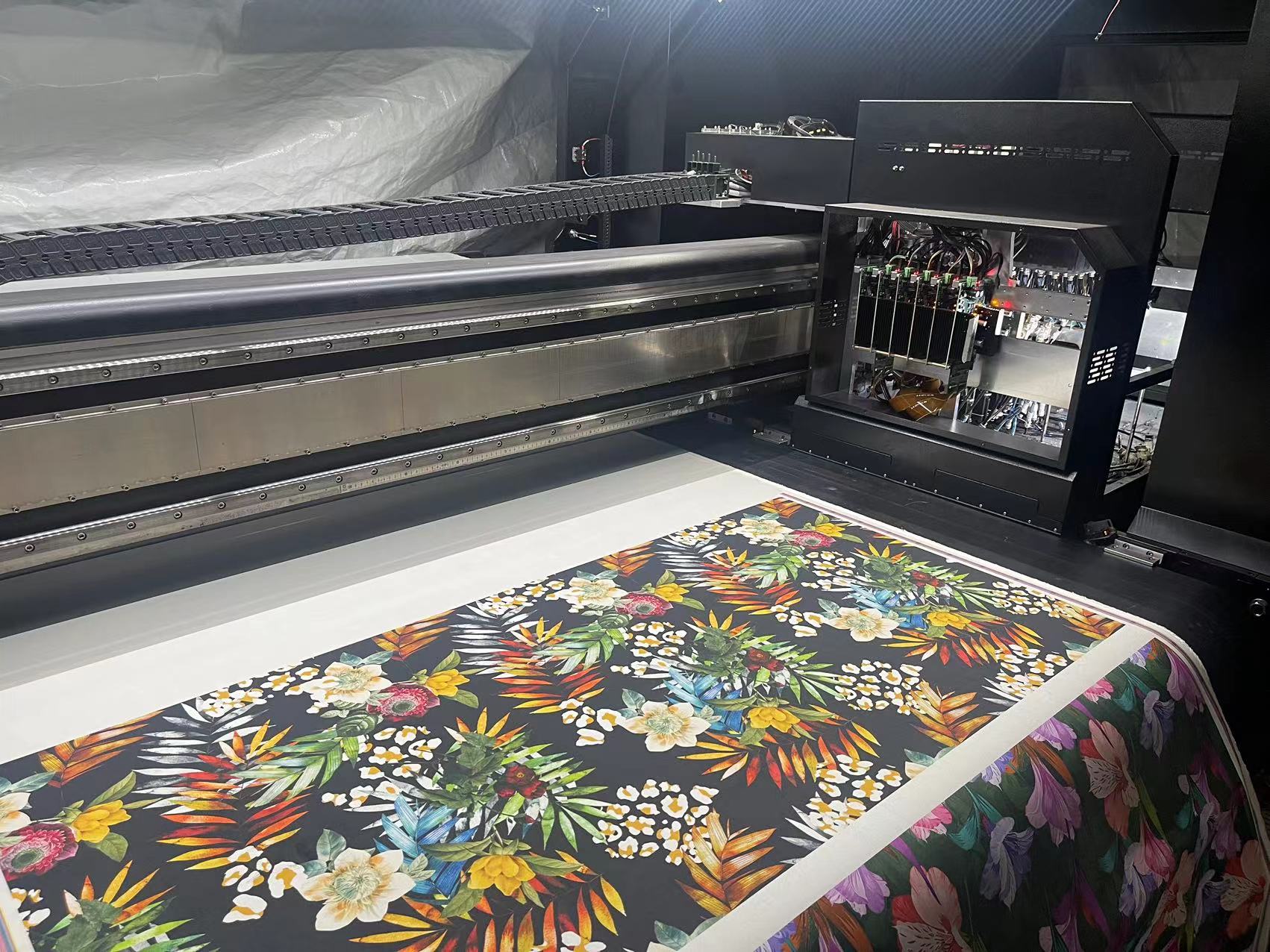In the past few years, there have been significant changes in the way we print on textiles. Along with conventional screen printing technology, digital textile printing has garnered immense popularity among businesses worldwide.
But what exactly is digital textile printing? And what does the process look like? In this blog post, we offer a comprehensive overview of digital textile printing and cover the industry analysis and top segments driving the digital textile printing market growth.
The market for digital textile printing was valued at USD 2.5 billion in 2022 and is expected to grow to USD 8.46 billion at a CAGR of 13.1% during the forecast period.
Digital Textile Printing Explained
Simply put, digital textile printing is the process of printing on textiles using digital technologies. Digital textile printing shares many similarities with the conventional textile printing process. The first step in the process involves selecting and pretreating the fabric on which the print is to be made. After this, the material is passed through the printer quickly and steamed, washed, and dried.
But unlike traditional printing, where different pre-mixed dye colors are pressed on the fabric, digital textile printing uses a printable graphical data file design. Digital textile printers read the right color information using an RGB system and then print the desired color on the fabric with small ink droplets.
Growth Drivers
The digital textile printing market demand is being driven by the booming textile and apparel sector in India. According to the Confederation of Indian Industry (CII), the Indian textile sector is projected to touch a production value of USD 185 billion by 2025. Besides, exports in the textile industry are expected to experience a substantial increase in the near future.
Digital textile printing plays a crucial role in meeting the evolving demands of the sector. Using digital textile printing allows manufacturers to efficiently produce customized products and cater to a wide consumer base. The growing Indian textile sector and the rising demand for textile products contribute to the market’s expansion.
Types of Inks
Different types of natural and synthetic fabrics require the usage of varying combinations of inks. Here are some digital printing inks that are widely used in the digital textile printing market:
Direct-disperse inks: These inks are used to print onto polyester and polyester blends. Direct-disperse inks dye the fabric’s fiber and become its part.
Reactive inks: Reactive inks are usually used to print on nylon, rayon, and linen. This is because the cellulose fibers in fabrics like nylon and linen can form a chemical bond with reactive inks.
Textile pigment inks: Textile pigment inks come with binders. This enables the pigments to stick to the surface of cotton and other natural fabrics.
Advantages of Digital Textile Printing
Below are some of the many advantages of digital textile printing:
Low fixed costs: Digital textile printing has comparatively low fixed costs due to the absence of screen engraving and color separation.
Fast sampling: Digital textile printing allows for fast sampling as designs can be created digitally. Also, this printing method allows for short-time delivery as designs can be adjusted on the spot.
High savings on energy and water: Unlike traditional printing, digital textile printing doesn’t need washing screens to apply new colors. This helps in saving huge amounts of water.
Dry Sublimation Segment is Anticipated to Witness the Fastest Growth
Dry sublimation printing is known for its top-notch print quality. This printing method allows manufacturers to create high-resolution prints having excellent color accuracy and consistency. The ability to create visually appealing designs has led to increased adoption of sublimation printing, further fueling the digital textile printing market demand in the region.
Recent Developments
In June 2023, leading global inkjet printer and cutter manufacturer Roland DG unveiled its Roland DG Connect subscription service. The new cloud-based service aims at enhancing value and facilitating business growth for Roland’s customers.
Printing High-Resolution Designs
Advancements in digital textile printing have completely transformed the way manufacturers print on textiles. Digital textile printing allows for high-quality digital prints with colorful and vibrant designs, further driving the digital textile printing market sales.

